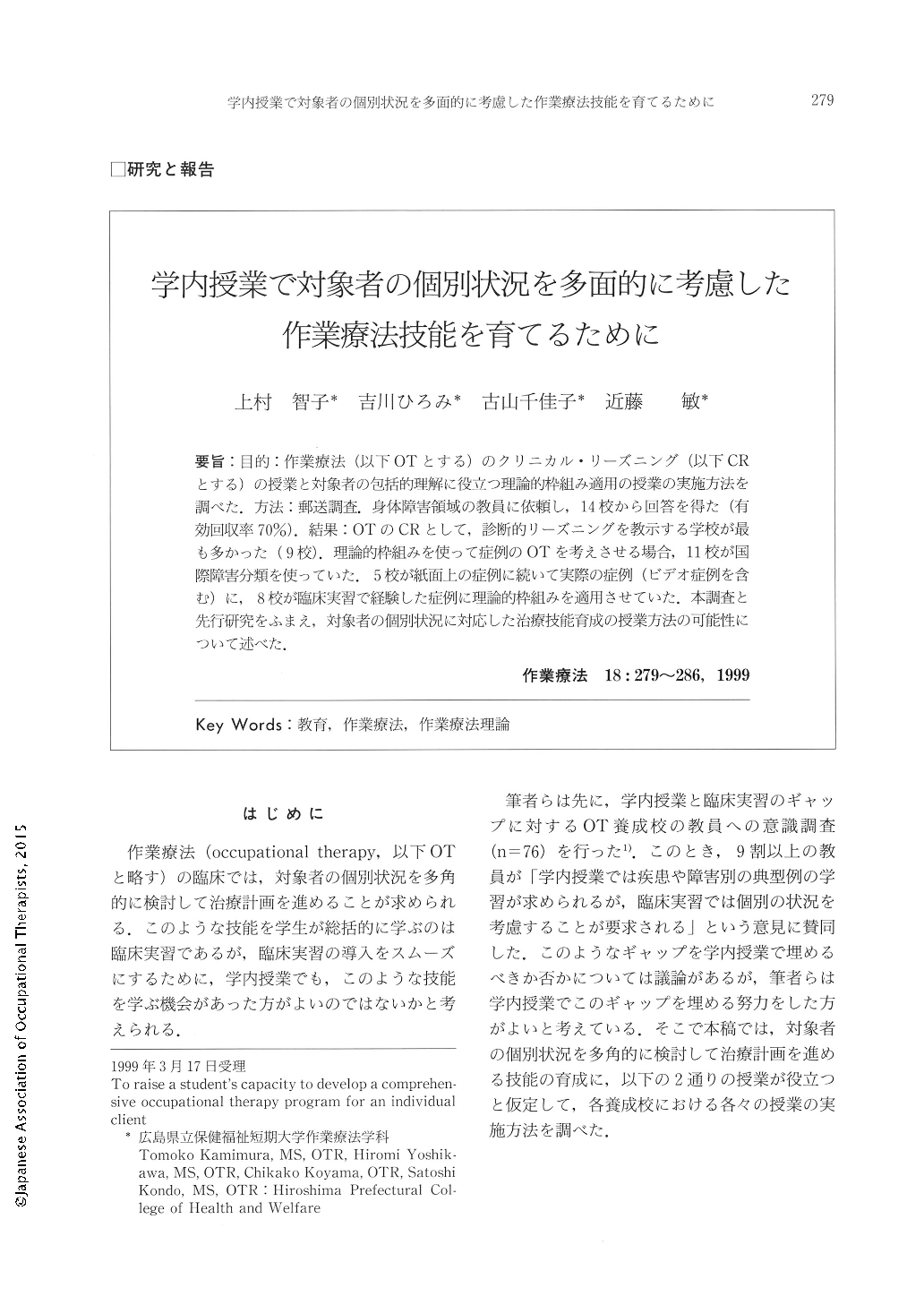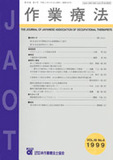Japanese
English
- 販売していません
- Abstract 文献概要
- 1ページ目 Look Inside
- 参考文献 Reference
- サイト内被引用 Cited by
要旨:目的:作業療法(以下OTとする)のクリニカル・リーズニング(以下CRとする)の授業と対象者の包括的理解に役立つ理論的枠組み適用の授業の実施方法を調べた.方法:郵送調査.身体障害領域の教員に依頼し,14校から回答を得た(有効回収率70%).結果:OTのCRとして,診断的リーズニングを教示する学校が最も多かった(9校).理論的枠組みを使って症例のOTを考えさせる場合,11校が国際障害分類を使っていた.5校が紙面上の症例に続いて実際の症例(ビデオ症例を含む)に,8校が臨床実習で経験した症例に理論的枠組みを適用させていた.本調査と先行研究をふまえ,対象者の個別状況に対応した治療技能育成の授業方法の可能性について述べた.
Objective: To inquire how to most effectively raise the student's capacity to develop a comprehensive program for an individual client in occupational therapy (OT) education. Methods: A mail survey. Questionnaires were sent to 20 OT educators at 20 different schools, who teach OT for physical dysfunction and have experience in teaching clinical reasoning and theoretical frames of reference to comprehend the needs of an individual client. Fourteen educators replied (response rate 70%). Results: Diagnostic reasoning was being taught in nine (64%) schools (multiple answers). When a theoretical frame of reference was used to develop a comprehensive OT program for an individual client, the International Classification of Impairments, Disabilities and Handicaps was employed in 11 schools. Other methodologies including Occupational Performance Model, Model of Human Occupation, Occupational Behavior Framework were also used in those schools. These theoretical frames of reference were applied first to a hypothetical case in theoretical analysis and then to a case involving an actual patient (sometimes with the use of a videotape) in 5 schools before fieldwork was conducted. Conclusion: We suggested that there might have to be a curriculum for teaching diagnostic reasoning, narrative reasoning, pragmatic reasoning, interactive reasoning, and conditional reasoning. From this survey we concluded that students might have to undergo a process of being exposed to different theoretical tools and develop their own capacity to adequately apply these tools to cases in real clinical encounters. Further research is needed to determine how to raise the student's capacity to develop a comprehensive program for an individual client in OT education.

Copyright © 1999, Japanese Association of Occupational Therapists. All rights reserved.


